The third lecture in the series marking the 125th anniversary of the Diocese of Ottawa was an online panel discussion on the theme of “Signs of Hope in the Fight Against Climate Change” on Feb. 21. The event brought together four panelists with diverse perspectives and expertise on the issue of climate change.
Dean Beth Bretzlaff of Christ Church Cathedral welcomed everyone, and Bishop Shane Parker moderated the discussion and conversation that followed.
The question posed to each panelist was “Where do you see signs of hope in the fight against climate change?” Here are a few highlights from each of their answers, but the whole rich discussion is posted on the diocesan YouTube channel.
Lynda Collins
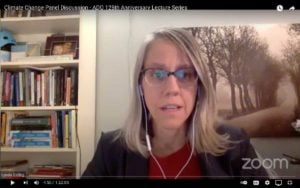 Professor at Centre for Environmental Law and Global Sustainability at the University of Ottawa and the author of The Ecological Constitution.
Professor at Centre for Environmental Law and Global Sustainability at the University of Ottawa and the author of The Ecological Constitution.
Collins said, “What gives me hope …is the fact that judges all over the world are waking up and taking action on climate change.” She offered a brief international tour of some of the judgments she sees as most promising:
A 2015 decision by the High Court of Pakistan found that that nation’s failure to adhere to its own climate change plan violated its citizens’ constitutional rights to life and to dignity. The Court ordered every ministry and department of the government to appoint climate champions. The Court also created a climate change commission and supervised activities in a series of 25 further hearings.
In 2018, “the Supreme Court of Colombia broke new ground making legal history, first of all by recognizing the Amazon as a legal person, and second by holding that the government had a constitutional duty to preserve the Amazon, in part due to its central importance in regulating the climate. It noted that the government’s failure to prevent deforestation was violating the rights of future generations.
“In 2021, the Supreme Court of Canada also issued a very progressive decision on federal carbon pricing legislation…. The Court said the only way to address the threat of climate change is to reduce greenhouse gas emissions, so the Court upheld the constitutionality of the act and recognized its necessity…”
“We are seeing, in my own view, an unprecedented judicial awakening… Judges have a unique level of power in society… Any time judges place a priority on something, you see it take hold in society.
“Many of the advances that we have made on human rights have been the result of constitutional litigation. I have a little boy who has multiple complex disabilities and he gets to go to school in a fully state funded day school and gets to go to and from school on a wonderful bus …, and a lot of that is the result of human rights litigation specifically on the issue of disabled kids and their rights to education.
“So it is actually quite crucial in any social movement to get through to judges… To see now that judges in so many different corners of the globe are now taking this on, to me, points to a pivot point in human history. Now I feel like we have a fighting chance because these key players are now on the field instead in the stands.”
Jacob Crane
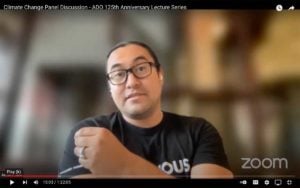 Citizen of the Tsuut’ina Nation, an entrepreneur and community leader, and the Just Transition Lead for Indigenous Climate Action.
Citizen of the Tsuut’ina Nation, an entrepreneur and community leader, and the Just Transition Lead for Indigenous Climate Action.
Crane began by sharing that, having recently returned from the UN Climate Change Conference (COP26) in Glasgow, the question about signs of hope “was a hard topic to address from an Indigenous perspective.” But he added, “I think we’ve been banging at the doors for a couple of hundred years and finally people are starting to listen…. I think that’s powerful to come into a space like this…. It’s nice to be able to speak freely and transfer knowledge,” he said.
At the local level, Crane said, “especially at a grassroots level, conversations are starting where Indigenous people are at the decision-making table. Are we there yet? No. We’re not there yet.” He pointed out that the history of the energy industry, oil and gas, has been the history of “extracting natural resources from Indigenous people’s lands without compensation or involvement….So I think it is really important that we get to those decision making tables.”
It’s ironic, he said, that people who, in the past, didn’t want Indigenous people to be Indigenous and did everything they could to change them are now starting to look to Indigenous peoples to help figure out how to battle climate change.
“We always worked with the land. You are talking about a people who never had trash. They utilized everything from the animal, everything had a purpose, and when we would camp in an area, once that area started to show signs of fatigue, we would move camp to a new place. … We would give the land a chance to heal itself… You want to save the planet? Look to Indigenous people, put them at the forefront of these movements and let’s go. Let’s listen to how they would do things.”
As Just Transition Lead for Indigenous Climate Action, he explained that his focus is helping Indigenous communities prepare to transition to using renewable energy.
When asked for some examples of projects, Crane said, “In Alberta, within my own community, there are electric charging stations solar panels that are powering a community centre,…
“There is a camp in northern Ontario.. and they are solarizing a land-based learning centre for Indigenous youth.
“I know there’s 2,500 Indigenous renewable energy projects,” he said, in Canada.
Stewart Elgie
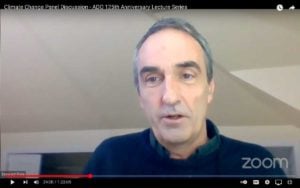 Professor of law and economics at the University of Ottawa, director of the university’s interdisciplinary Institute for the Environment, the founder and chair of the green think tank Smart Prosperity, as well as Eco-Justice, Canada’s largest environmental law organization.
Professor of law and economics at the University of Ottawa, director of the university’s interdisciplinary Institute for the Environment, the founder and chair of the green think tank Smart Prosperity, as well as Eco-Justice, Canada’s largest environmental law organization.
Elgie began by describing the challenge ahead: “In its simplest essence, we’re trying to take the energy system that unleashed the Industrial Revolution, and in many ways ushered in a level of wealth and well-being for much of the world that we had never seen before, and we’re trying to replace it in 20 or 30 years…. That is the scale of the problem but let me tell you why I am hopeful about it,” he said.
“In 20 or 30 years, assuming we made the transition to a low carbon economy, it’s actually not going to be that disruptive. Your life will not look that much different. You will still flick a switch on the wall and electricity will come out. It will just be generated by clean sources not coal or gas. You will probably still get in a vehicle, if you have a vehicle, and you’ll drive, but under the hood, it will be powered by electricity rather than gas….People will still get up and go to work and have jobs, but instead of making fossil fuel products like gas-powered cars, they will be making electric vehicles; they will be mining for the minerals needed for solar panels and electric vehicle batteries. On the surface, our lives will not be that different. Under the hood, a fundamental transformation in the energy drivers of our economy.”
Five or 10 years ago, this sounded like science fiction, he said, but people can see these changes happening around them now. “Five to 10% of the vehicles on the road are electric, more if you live in Quebec or British Columbia. By 2030, you will not be able to buy a gas-powered car.”
“In fact, I don’t think there’s much of an issue about whether we can build a low carbon economy, most of these technologies are there today,” he said. ‘The challenge is to accelerate the pace of innovation and drive down the costs.. …We’re starting to do that. The cost of electric vehicle batteries has gone down 90% in the last decade.“
Change is scary for everyone, he acknowledged. “The problem is the world is going to move to a low carbon economy whether Canada likes it or not. …Our only decision is ‘Are we going to be among the leaders in that or the trailers’?”
“It’s in our interest as country to be among the leaders in this change. Just to crystalize that we can do this and we are starting doing this, let me give you a few Canadian examples of success stories,” Elgie said.
“Aluminum is one of the most carbon intensive energy systems in the world. To make that metal takes a ton of energy and powered by fossil fuels. They’ve been working on a technology to make carbon-free aluminum for a few years, and it is now just been adopted, and the first plant in the world is in eastern Quebec, the Elysis plant, co-funded by Apple, which buys a lot of aluminum, the government of Canada, Quebec, Rio Tinto and Alcoa. We are now the place in the world making carbon free aluminum…
“We’ve just invested billions of dollars to convert some of the car manufacturing plants in Ontario to make electric vehicles…
“They’ve recently announced that the Six Nations in Ontario are going to be home to one of the world’s largest clean energy storage systems, the Oneida Project, so the First Nations are partnering with a company called NRStor to be a leader in energy storage, to store that wind and solar power so we can use it when the sun isn’t shining and the wind isn’t blowing.”
“If we put our minds to it, we can do this across the economy.”
Robert Gifford
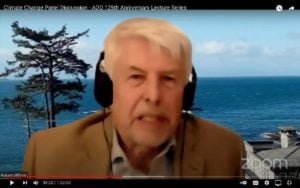 Professor of psychology and environmental studies at the University of Victoria
Professor of psychology and environmental studies at the University of Victoria
“For the environmental psychologist, it all starts with the 7.7 billion people making decisions about things… You can’t sell an electric car if people don’t want to buy it,” Gifford began. “It comes back, for the environmental psychologist, to each and every person making a choice about their daily lives. That’s where I see the hope is at the individual level, when I see people making changes in their lives, overcoming some of what I’ve called the dragons of inaction, which are the compelling reasons why we don’t do things we should do.
“One of the main dragons of inaction is a sense of “I can’t do it. I’m only one person.” People say, ‘I don’t have any power.’ My typical response to people is ‘Does that mean you don’t believe in voting either? Because one votes not going to change anything, or 99% of the time it won’t. And the person usually says ‘Well, yes of course I believe in voting.’ It’s the same thing with climate change. We have to do it one person at a time around the world.”
Though change may happen one person at a time, that doesn’t mean you have to do it alone, Gifford said. “For me, step one is to do something like we are doing here, join with others.” Whether it is talking with family, neighbours, or people in climate action groups, he said, “There’s nothing that creates more hope than joining up with somebody else.
“I see each of us as our own source of hope because we can change. I could change more. You could probably change more. What we have to do is to find ways to work with other people, in our household, all the way up to the federal government…. That’s really the key, I think, is this sense of working together.”
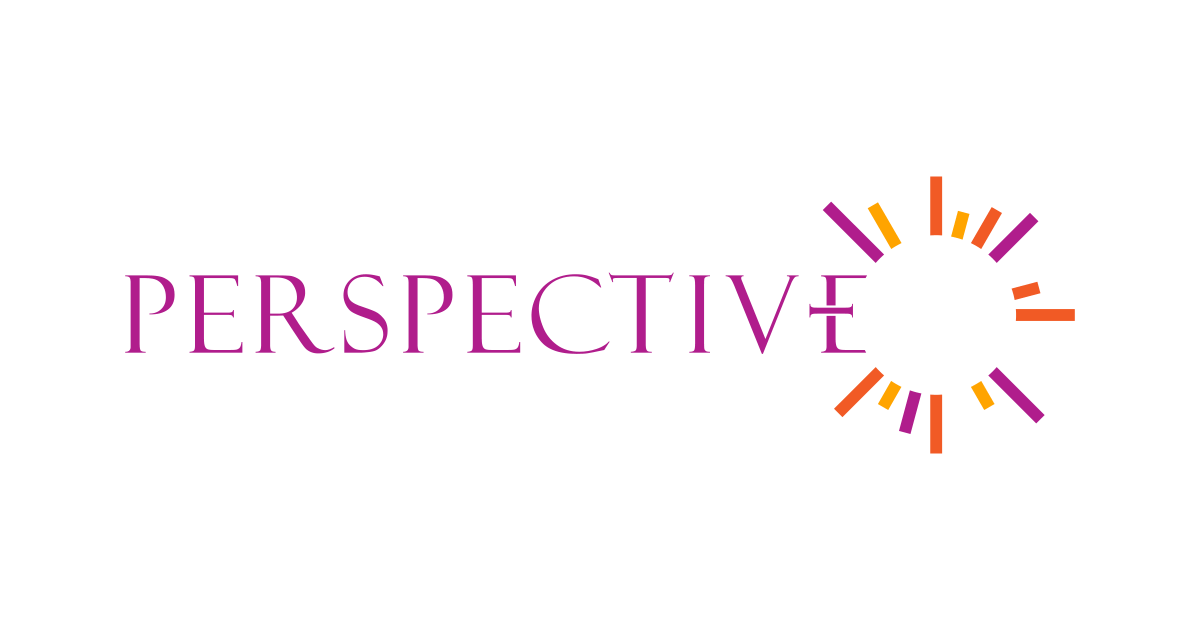

Listening for God’s voice in a time of change